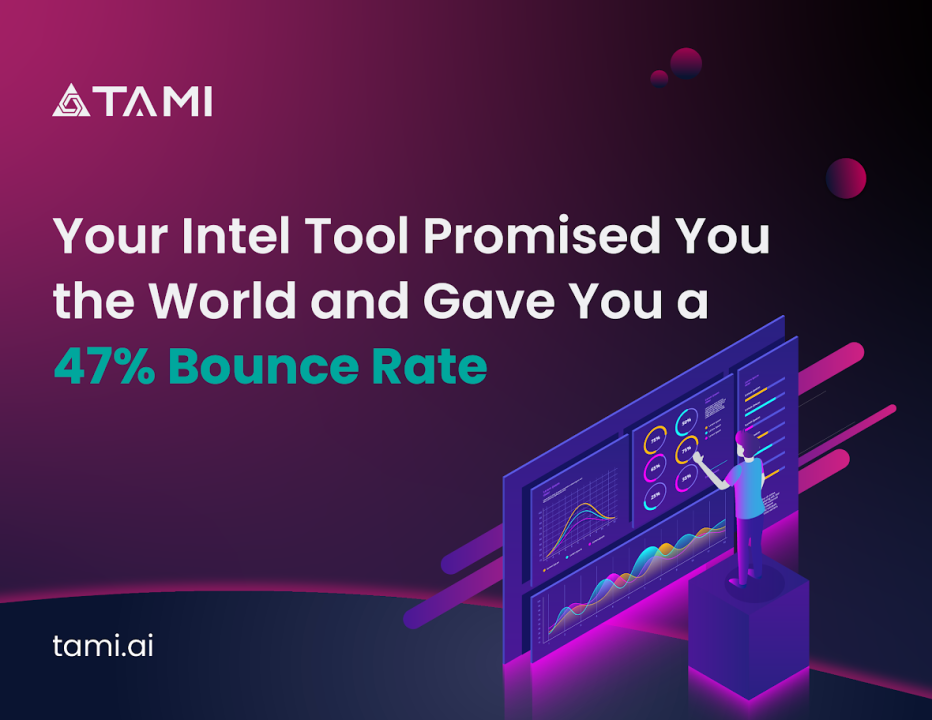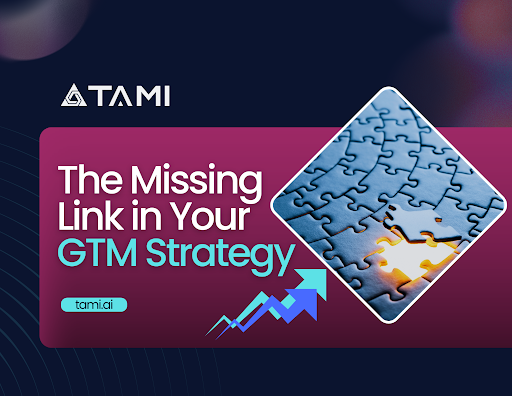
Why Market Intelligence Tools Fail (And What to Use Instead)
08/09/2025Sales teams today are judged on the quality of their pipeline. Bad data slows outreach, inflates costs, and limits conversions. Choosing the right sales data platform is critical, and two names that often come up are Lead Forensics vs TAMI.
Both provide insights to help businesses find prospects, but they approach the challenge in very different ways. Understanding these differences is essential if you want data that translates into actual revenue.
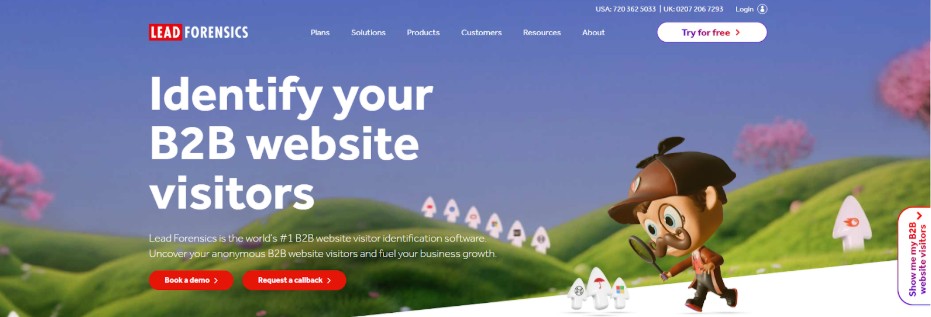
What Lead Forensics offers
Lead Forensics is best known for its website visitor tracking. The platform reveals which businesses visit your site, even if they don’t fill out a form. This can be valuable for companies that already generate significant inbound traffic and want to capture more of it.
By identifying the company behind an anonymous visit, sales teams can follow up directly and use that signal as a starting point for outreach.
The downside is that its effectiveness depends heavily on your website traffic volume and quality. If you’re not already driving the right audience, Lead Forensics can surface a lot of irrelevant data.
And while it provides company-level insights, the contact details can sometimes be incomplete or outdated, which means sales teams still have to invest time in enrichment.
Pros:
- Strong website visitor tracking capabilities
- Useful for companies with heavy inbound traffic
- Provides intent signals for follow-up
Cons:
- Dependent on site traffic volume and quality
- Limited beyond inbound visitors
- Contact details often require additional enrichment
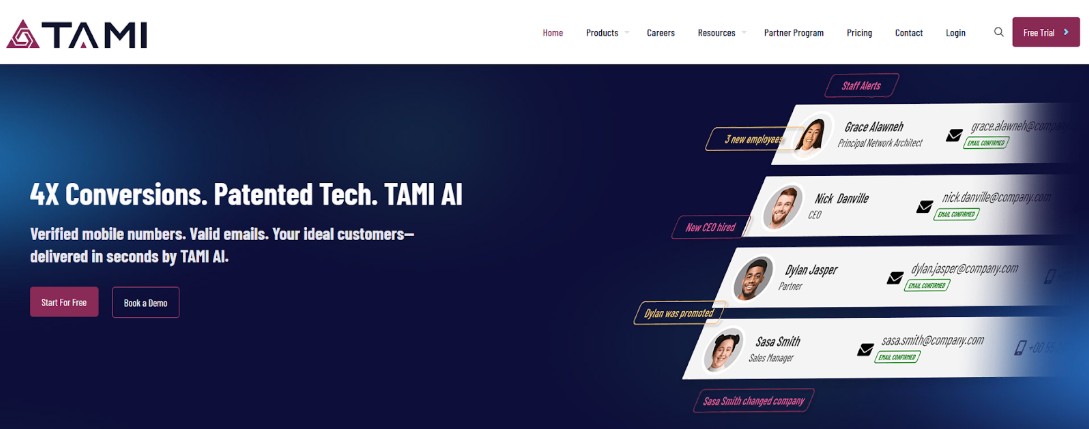
What TAMI offers
TAMI takes a broader approach to sales intelligence. Instead of relying only on who visits your website, it provides a complete view of your total addressable market. The platform delivers accurate company and contact data across millions of businesses worldwide, updated in real time.
That means sales teams aren’t limited to inbound traffic but can proactively target competitor customers, lookalike accounts, and high-potential prospects that align with their ideal profile.
Where TAMI stands out is in its accuracy. The platform guarantees bounce rates below 5% by continuously verifying emails and phone numbers. It integrates directly into CRMs like Salesforce and HubSpot, enriching records with new firmographic data, flagging inactive accounts, and triggering alerts when prospects switch jobs or move to competitors.
This creates a living database that keeps your pipeline fresh rather than relying on static exports.
Pros:
- Access to global sales data beyond inbound traffic
- Real-time updates with verified emails and phone numbers
- CRM integration for continuous enrichment
- Strong accuracy with bounce rates under 5%
Cons:
- Best suited for teams ready to act on large volumes of outbound data
- May be more advanced than businesses with small or unstructured sales processes need
Lead Forensics vs TAMI: sales data accuracy
The value of a sales data platform comes down to how clean and reliable the information is. In this area, TAMI has been proven to outperform alternatives. In a head-to-head test by a UK-based MarTech company, TAMI achieved a 95% delivery rate and delivered a 10x higher conversion rate than Cognism and Zoominfo.
Lead Forensics, by contrast, is less about data accuracy and more about intent tracking from site visits. For companies that need verified contacts to fuel outbound, this limitation can be costly.
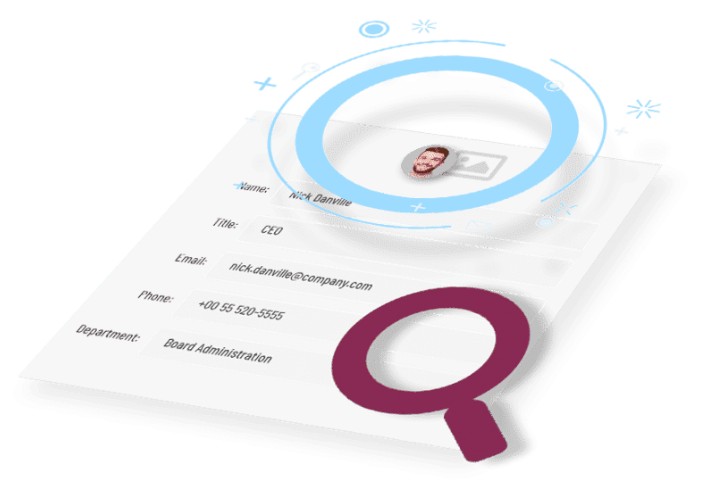
Lead Forensics vs TAMI: use cases
Lead Forensics works best for businesses with strong inbound marketing. If you have thousands of website visitors each month and want to identify which companies are researching your solutions, the platform can be useful. However, if inbound traffic is inconsistent, the value quickly drops.
TAMI, on the other hand, is built for companies that want proactive growth. Whether it’s building competitor customer lists, mapping global markets, or running highly targeted campaigns, it enables sales and marketing teams to act without waiting for prospects to arrive on the website.
This makes it a stronger fit for outbound teams and companies that want to scale into new markets.
Lead tracking alternatives and the bigger picture
It’s worth looking at where these platforms fit within the broader landscape of lead tracking alternatives. Tools like Clearbit and Albacross also compete in this space, but most either focus narrowly on visitor tracking or provide static data exports that age quickly.
The advantage of a platform like TAMI is its continuous refresh cycle and AI-driven enrichment. Rather than chasing stale lists, sales teams can rely on live updates that reflect real business activity.
Cost and ROI considerations
Both Lead Forensics and TAMI require investment, but the return depends on how well the platform fits your model. If your marketing engine already brings in the right visitors, Lead Forensics can help extract more value from that audience.
If you need verified contacts and a reliable way to identify high-potential accounts beyond inbound, TAMI is the more cost-effective option. By cutting bounce rates, removing bad data, and surfacing competitor customers, TAMI reduces wasted spend and shortens sales cycles.
Practical steps to implement
Switching to or adding a new sales data platform should be planned around your go-to-market model. Start by defining your ideal customer profile and identifying whether inbound or outbound is your primary driver.
If it’s inbound-heavy, test how many of your visitors Lead Forensics can match to accounts and whether the data is usable. If you’re focused on outbound, pilot TAMI with a segment of your sales team to measure delivery rates, pipeline impact, and conversion improvement.
The next step is integration. Both platforms integrate with CRMs, but the difference lies in how well the data is maintained. With TAMI, enrichment is continuous, meaning your CRM becomes a source of truth instead of a graveyard of outdated contacts. This is where long-term ROI compounds.
Bonus insights on sales data quality
Independent research backs up the importance of accurate, refreshed data. Gartner reports that poor-quality B2B data leads to an average of 25% revenue loss each year due to wasted resources and missed opportunities.
Similarly, McKinsey has highlighted that real-time data integration is now one of the top factors in improving sales productivity. Platforms that fail to refresh or verify at scale risk undermining entire go-to-market efforts.
TAMI’s case studies highlight how organizations from logistics giants to MarTech providers have achieved measurable gains in revenue and efficiency by shifting to real-time intelligence.
That track record suggests the choice between Lead Forensics and TAMI should not just be about features but about which platform consistently delivers verified sales outcomes.
Final thoughts
When comparing Lead Forensics vs TAMI, the decision comes down to whether you want to react to inbound signals or proactively build a pipeline with accurate, real-time sales data.
Lead Forensics provides value for companies with high inbound traffic, but its scope is limited. TAMI offers global coverage, verified contacts, competitor insights, and continuous CRM enrichment, all designed to give sales teams the highest-quality data possible.
If your goal is to capture every possible opportunity, TAMI is the clear choice. Don’t settle for incomplete data or static lists. Book a demo today and see how TAMI can help you find better sales data, improve conversions, and scale your pipeline with confidence.


